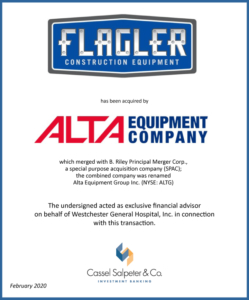Loans You Can Get with Bad Credit
By Adam Uzialko
Feb 28, 2020
If you have a bad credit score and need a business loan, these financing options could help you secure the funding you need.
- Borrowers with good credit can usually access bank loans with favorable terms and low interest rates.
- Less creditworthy businesses might have to turn to alternative lenders that offer more expensive financing options.
- Using financing to stabilize your business and repair damaged credit scores is possible but risky.
Every business needs funding, and many turn to loans. Unfortunately, not every business has the sterling credit required to receive a loan from a bank with favorable terms and low interest rates. If your business doesn’t qualify for a bank loan, where else can you turn?
There is an entire industry of alternative lenders that aim to fill the gaps where banks are unwilling or unable to lend. However, accepting money from alternative lenders requires business owners to be savvy, lest they dig themselves deeper into debt.
What do lenders look for when considering a business loan?
When many businesses require funding, their first stop is the bank or some other conventional lender, like a credit union. These financial institutions offer a variety of financial products, including term loans and SBA 7(a) loans.
What does it take to qualify for a loan from a conventional lender? Typically, these financial institutions look for several things, including:
- Credit score: For a business, there are two types of credit scores that matter: your business credit report and your FICO credit
- A business credit score is tied to your Employer Identification Number (EIN), which can be registered with Equifax, Experian or Dun & Bradstreet. Each organization has its own method of calculating business credit scores; for example, Experian considers factors like credit utilization, size of the business, length of time in business, public records and the owner’s personal credit score to calculate a score ranging from one to 100.
- A FICO credit score is your personal credit score, which ranges from 300 to 850. The FICO credit score is tied to your Social Security number and is calculated by three credit reporting bureaus: Equifax, Experian and A FICO credit score is calculated using several factors, including debt repayment history, outstanding debts, length of credit history and whether you have any new lines of credit open.
- Debt-to-income ratio: Your debt-to-income ratio is a percentage that expresses how significant your required debt service payments will be in comparison to the money you bring For example, if you owe $30 and your income is $100, your debt-to-income ratio is 30%. Generally, lenders will look for a debt-to-income ratio in the mid to low 30s, though sometimes businesses with a debt-to-income ratio up to 43% can be approved for a loan.
- Cash reserves: At a bare minimum, lenders want to see businesses maintain several months’ worth of expenses in cash reserves. Depending on the lender you are working with, they might expect three months of cash reserves to be kept on hand, while others prefer six months or more. Cash reserves assure the lender that even if unexpected expenses arise or a slowdown in sales occurs, your business can still cover loan repayments.
- Collateral: Lenders will also consider the assets your business holds as collateral to back the loan in the event you don’t have money available to make your payments. Common assets used as collateral include equipment or machinery, land and other real estate.
As part of your loan application, you will likely have to provide several months’ worth of bank statements so lenders can understand your business’s cash flow. However, few elements are as important to a conventional lender as a business’s credit score and the personal credit score of the owner.
What is the credit spectrum?
Lenders look out upon the vast sea of potential borrowers and see a credit spectrum that ranges from very bad to very good. Depending on a business’s position in the credit spectrum, certain types of funding might be unavailable to them. Businesses with great credit can usually obtain long-term loans at low interest rates, but less creditworthy businesses might have to pursue more expensive and risky funding options.
“On the one hand of the credit spectrum is someone who can walk into a major bank and borrow money on the business’s credit, not a personal guarantee,” said James Cassel, co-founder and chairman of Cassel Salpeter & Co.
Those borrowers can expect low interest rates ranging from 2% to 5% on a term loan. Of course, Cassel added, that’s only true for “stellar businesses with great history.”
“On the other side of the rainbow are businesses that can’t get money from any kind of institutional lender,” Cassel said.
And just as there is a broad spectrum of credit scores for potential borrowers, there is a spectrum of financial products. Some, like bank loans or SBA 7(a) loans, are available to creditworthy borrowers, while businesses with decent credit might require a guaranteed loan.
What types of business loans can you get with bad credit?
What can businesses with bad credit do when they need funding? If their credit history isn’t good enough to obtain a loan from a conventional lender, businesses often turn to other types of financing, often provided by alternative lenders or private lenders. While the flexibility and speed with which these loans can be approved are useful to borrowers with bad credit, the terms can also be restrictive and the loans expensive.
“The further down you are in the credit funnel, the worse the rates are,” Cassel said. “With great credit, it could be 5%; with bad credit … it could bethe equivalent of 40%.”
Some of the most common loans available to businesses with mediocre or bad credit scores include:
- Short-term loans: Short-term loans include both term loans that are repaid in three years or less, as well as lines of credit repaid within one year. Businesses with good credit will also leverage short-term loans because of their low cost and easy approval process. For businesses with credit issues, short-term loans can be useful because lenders often prioritize cash flow over credit score. So long as you have enough revenue and reserves to support a short-term loan, a lender will likely approve your application.
- Hard money loans: Hard money loans include several different types of loans that are backed by a collateral asset rather than a credit score. Most often, the assets used as collateral are real estate, such as a building or plot of land. A bridge loan, for example, is a type of hard money loan that is often used when redeveloping a The loan is secured by the value of the real estate upon completion of the project, allowing the lender to foreclose on the property if the borrower defaults on the loan.
- Invoice financing: “Factoring,” or invoice financing, isn’t truly a Rather, a business owner essentially sells their accounts receivable to a factor at a reduced rate (typically ranging from 70% to 90% of the total value.) Once the outstanding invoices have been sold, a factor typically begins collecting the payments owed directly from your customers. Invoice factoring can be useful for seasonal businesses or when you need growth capital. However, using this option to cover operational expenses is a risky maneuver.
- Merchant cash advance: A merchant cash advance is also not technically a Instead, it is a form of financing that is backed by credit card sales (or sometimes just revenue in general.) Based on your sales volume, a lender will offer a lump sum payment in exchange for a portion of every credit card sale until the loan (plus fees) is repaid. Merchant cash advances can be very expensive and are considered a financing option of last resort.
Before accepting any type of funding, do your homework. Research the lender thoroughly to ensure they are a reputable brand and not a predatory lender. Closely review any agreements before signing; have your attorney and accountant review them as well, if possible. Only accept money that you can realistically pay back in the specified time. Otherwise, financing could expedite the demise of a financially troubled business.
How to qualify for a short-term loan with bad credit
Short-term loans are a type of small business loan that closely resembles a conventional term loan in many ways. Short-term loans carry an interest rate and require repayment of both principal and interest within a certain period, just like a bank loan. However, because the term is less than a year, short-term lenders are more concerned with a business’s cash flow than its credit score.
“Banks ask for all types of collateral, and personal credit is very important to the bank,” said Michael Baynes, co-founder and CEO of Clarify Capital and a business.com community member. “What’s important to us is cash flow [demonstrated] through six months of bank statements. If we feel [a business’s] bank balance can support our funding over the next four to 12 months, we’re comfortable lending to them regardless of personal credit score.”
Generally, Baynes said, alternative loans require a one-page application along with a minimum of three months of bank statements. That’s all an alternative lender needs to approve or deny a potential borrower’s loan application. But what exactly are alternative lenders looking for in a loan applicant?
“The most common reason we reject an application is due to a business being overleveraged,” Baynes said. “If they already have existing debt … and we feel additional payment would overleverage them, we would turn the business down.
“The other reason an application would be declined would be low revenue and low daily bank balances,” he added. “We need to see $10,000 to $15,000 per month in revenue or deposits. If they struggle with overdrafts or negative days in their bank account, we’re not confident they can make the payments.”
The approval process for these types of alternative loans tends to be much faster than conventional banks, which generally take weeks or months to approve or reject a loan application. If approved, funding for alternative loans can often be delivered within a few days at most.
To expedite approval, it’s important to maintain good financial documentation. According to Cassel, keeping detailed, accurate books is one of the most important things a business can do.
“Make sure your financial house is in order,” he said. “Every business needs to have monthly financials. They need to be available no later than 10 to 15 days after the end of month. Some businesses don’t get them until 90 days after the month. Then you’re 90 days further in the hole, and it’s too late to correct it.”
Good books not only help you avoid financial trouble, but they give lenders the insight they need to make a decision as to whether or not to extend financing to your business.
How can you begin repairing bad credit?
There are advantages to repairing a damaged credit score even if you do qualify for funding. According to Baynes, an improved credit score can avail your business to better terms and rates. While rebuilding credit can be a long and arduous process, you should do so if your financial situation has stabilized.
“Obviously, first and foremost is staying current on your personal credit payments,” Baynes said. “These are things like auto loans and credit cards. Maxed out credit cards drive down your credit score. Missing payments or just making minimum payments brings down your credit score tremendously.”
According to Cassel, business credit rehabilitation can be extremely difficult and requires a detailed plan. While maintaining your personal credit score, you also need to keep an eye on your business’s debt service.
“When businesses get into trouble, they should put together a 13-week cash flow [projection] of expected funds in and expected funds out,” he said. “This helps them manage cash and decide what to pay for.”
There are some ways a business can seek relief to help stabilize their financial situation as well, such as raising prices. Many small business owners are reluctant to raise prices, Cassel said, because they are afraid of losing customers. In many cases though, there is more room to hike rates than entrepreneurs realize.
Businesses can also ask suppliers to extend payment schedules. If you are a good customer who has remained current in the past, a vendor is likely to work with you; after all, they don’t want to lose you as a customer.
If you’ve partnered with a lender before, they might be willing to lend a bit more to your business if they see you are legitimately on the road to financial rehabilitation. This is known as an “airball,” Cassel said. If things become truly dire, a business can usually call in a restructuring firm to reorganize how the business operates.
“Sometimes it is a vicious cycle that is impossible to get out of,” Cassel added. “As things get worse, the cost of borrowing goes up, so you have to figure out how to stabilize the business. Once you stabilize, you can focus on repair.”
Unfortunately, when financial troubles become pervasive enough, there are times where business owners have to reckon with a hard truth many entrepreneurs find difficult to face. The best option, Cassel said, is sometimes to cut your losses and stop the bleeding.
“You’ve got to look at the viability of the business,” he said. “Business owners have to be honest with themselves about long-term viability.”
Ultimately, securing financing should be a way to get your business to a better place in the credit spectrum. That way, the next time you need funding, you can successfully pursue a financial product with better rates and more favorable terms. If financing doesn’t support that type of forward progress, then it could just be digging your business into a deeper hole. For struggling businesses, Cassel had this advice:
“Be honest, try to get a loan and, ultimately, get back to a better lender,” he said. “Some businesses never do, and owners start to feel like they’re working for the bank.”
Financing can be a great tool in an entrepreneur’s toolbox, but taken irresponsibly or out of desperation, expensive loans can be the death knell for a cash-strapped business. Always have a plan for any money you borrow and keep an open line of communication with your lenders. If you do, you could be well on the road to repairing your credit.
Click here to read the PDF.





 By James S. Cassel
By James S. Cassel




